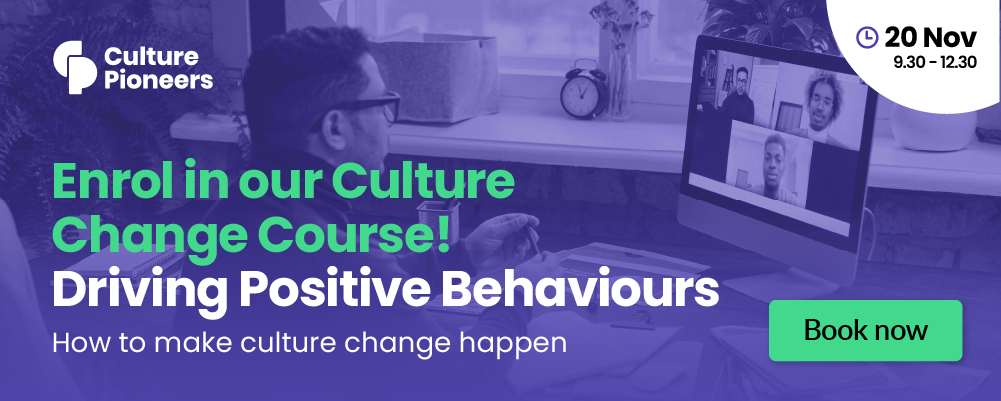Over the past few years there has been much written about behaviour change and how individuals can learn new habits. These concepts are particularly useful for L&D professionals. Why?
If we reflect on Bass and Vaughan’s definition of learning back in 1966, we can see how vital it is to transfer the learning experience into action. According to these psychologists, learning is “a relatively permanent change in behaviour that occurs as a result of practice or experience.” (Training in industry: the management of learning)
Where can you start?
For L&D professionals looking to embed better behaviour change practices into learning interventions, a useful place to look for inspiration is the world of health and fitness.
Numerous behaviour change programmes have been deployed in this arena to help improve people’s health and lifestyle choices – to quit smoking, reduce alcohol intake and increase exercise, for example.

Below are four key behaviour change lessons from the world of fitness and health that can be translated for use in our organisations.
1. Start small and build gradually. Stack new practices on top of each other, one-by-one.
When individuals leave a workshop or finish listening to an inspiring podcast, they often feel that they want to change everything and change it immediately.
This might work for a few days, but it is definitely not sustainable.
Taking small steps can be much more effective in developing new behaviours.
When supporting our learners with action and implementation planning, we can encourage them to begin with small changes to daily routines.
For example, following learning around productivity, individuals can choose one thing to try for a set period of time such as time-blocking or using a Pomodoro timer.
Once the first change has been embedded and becomes a habit, the next idea can be put into practice.
Using short-term goals and milestones that build towards larger aims and objectives can help the individual to see that they are making progress and therefore stay motivated. Encourage learners to share their goals and action plans with others – including their line manager and peers.
This links to the next idea…
2. Create an environment that supports change
In the world of health and fitness, group sessions are regularly used to create an environment where individuals support each other – and are supported by a group facilitator.
This is a model that translates perfectly into the workplace.
Here are a few ways to create supportive environments:
Use action learning sets as a follow-up to off-job or self-directed learning.
An action learning set brings a group together to focus on real-world challenges and encourages experimentation with ideas and concepts.
Create online communities where learners can come together to share experiences, ask questions and provide feedback to each other.
Peer support can be extremely effective to keep the momentum going when motivation takes a dip.
Introduce accountability groups.
This is a space for groups of learners to challenge each other to complete the actions that they have planned at the end of a structured learning experience. It is sometimes much easier for individuals to keep themselves on track when they know that they have to report back on progress to their peers.
Once individuals have started to build their new habits and change their behaviours…
3. Incorporate rewards and recognition
To maintain momentum and motivation, encourage your learners to share their planned actions. This can be supported by providing appropriate rewards and recognition.
Some individuals will relish the idea of being part of a leaderboard and enjoy an element of competitiveness.
Others will value being awarded a digital badge or a hard copy certificate each time they achieve a milestone.
A financial incentive such as a voucher or bonus might also be an option for when an individual achieves sustained behaviour change.
There will be as many different possibilities as there are individuals. It’s therefore important for L&D professionals to help individuals identify which rewards will work for them.
Once you have celebrated milestones, it is then important to…
4. Identify impact
There will always be reasons behind the desire to change behaviours.
Within health and fitness arenas, goals are often linked to specific events such as losing weight in preparation for a wedding or special event. Sometimes behaviour change is required due to an illness or impending problem such as the early signs of diabetes.
Within the workplace, L&D professionals can – and should – clarify and articulate the desired impact of any learning.
Are the goals about moving towards a desired future? Or are they about avoiding a future challenge or problem?
With this in mind, at the start of any behaviour change activity, L&D can help individuals clearly describe measures of success and desired outcomes. These then become descriptors of the desired impact of the behaviour change.
For individuals who are changing their behaviours, understanding that their changes have truly had an impact will support the ongoing maintenance of their new habits.
Remember the power of role modelling
There are many other behaviour change ideas for L&D professionals to explore in this arena. We should continue to be curious about what we can learn from other disciplines.
And as a final note, remember the importance of role modelling – both by us and the leaders in our organisations. If we are to expect team members to change their behaviours, they need to see us doing the same thing and lead by example.
Learn how to deliver behavioural change interventions that truly stick in a half-day immersive course taking place on 20th November. Led by a seasoned consultant with over 30 years of experience, this virtual course will provide you with expert insights, proven methods and practical tools to lead sustainable culture change that drives measurable results. Find out more here.





